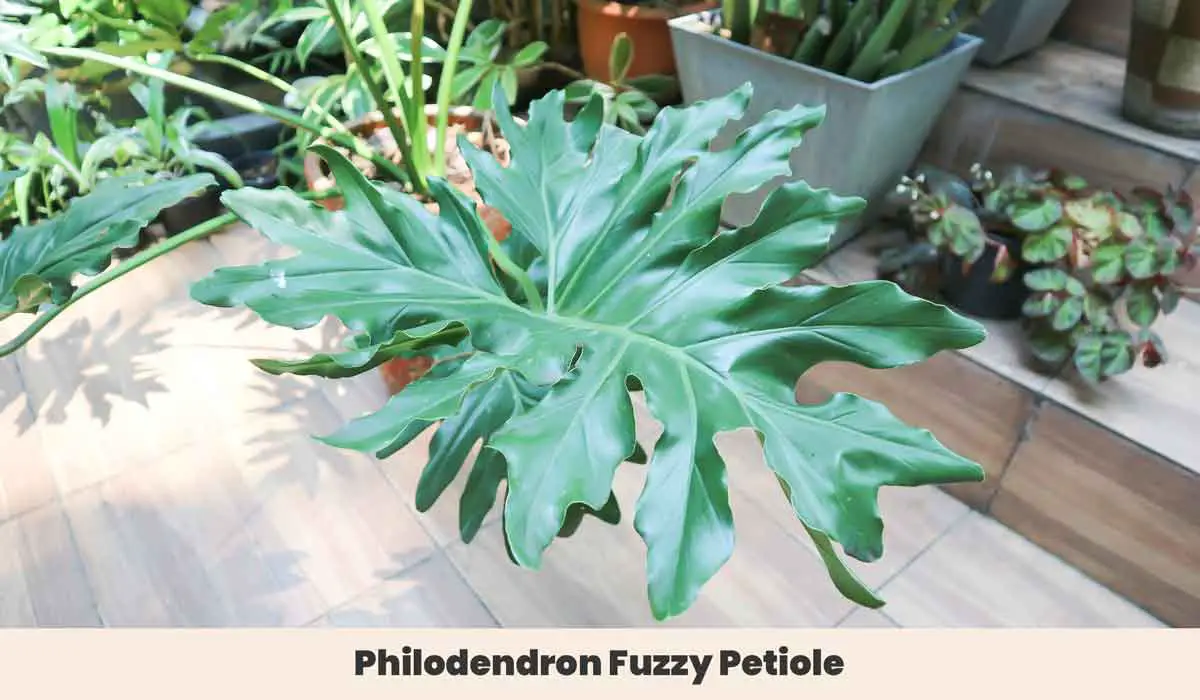11 Plants With Heart-Shaped Leaves

This post follows our research editorial guidelines.

If you’re a fan of plants, you might be familiar with the famous heartleaf philodendron, but did you know that there’s a wide range of other plants and even trees with heart-shaped leaves?

The 11 plants below will steal your heart with their unique foliage.
Whether you’re a seasoned plant parent or just starting your collection, these beauties can make your home warm and inviting.
So, grab your watering can, and let’s explore these lovely leafy companions together!
Table of Contents
1. Swiss Cheese Plant (Monstera Deliciosa)

A tropical beauty with distinct split leaves that resemble Swiss cheese, the Monstera Deliciosa adds an exotic touch to any indoor space.
| Scientific Name: | Monstera Deliciosa |
| Growth Rate: | Moderate to fast |
| Native Range: | Southern Mexico, Central America, and parts of South America |
| Hardiness Range: | USDA zones 10-12 |
| Exposure: | Bright, indirect light to partial shade |
| Soil Needs: | Well-draining soil with organic matter |
| Tolerate: | Low light, drought, and occasional overwatering |
| Fertilizing Needs: | Monthly during the growing season with a balanced liquid fertilizer |
| Pruning Needs: | Prune as needed to control size or remove damaged or unsightly leaves |
2. Philodendron Fuzzy Petiole (Philodendron Bipinnatifidum)

With its unique fuzzy stems and vibrant green foliage, the Philodendron Fuzzy Petiole is a show-stopper that adds texture and personality to any plant collection.
| Scientific Name: | Philodendron Bipinnatifidum (also known as Philodendron Selloum) |
| Growth Rate: | Moderate |
| Native Range: | South America |
| Hardiness Range: | USDA zones 9-11 |
| Exposure: | Bright, indirect light to partial shade |
| Soil Needs: | Well-draining soil with organic matter |
| Tolerate: | Low light, drought, and occasional overwatering |
| Fertilizing Needs: | Monthly during the growing season with a balanced liquid fertilizer |
| Pruning Needs: | Prune as needed to control size or remove damaged or unsightly leaves |
3. Hoya Heart (Hoya Kerrii)

The Hoya Heart’s heart-shaped leaves and trailing vines make a delicate and charming plant perfect for hanging baskets and tabletop arrangements.
| Scientific Name: | Hoya Kerrii |
| Growth Rate: | Slow |
| Native Range: | Southeast Asia |
| Hardiness Range: | USDA zones 10-12 |
| Exposure: | Bright, indirect light |
| Soil Needs: | Well-draining soil with some organic matter |
| Tolerate: | Drought and occasional overwatering, but sensitive to overwatering |
| Fertilizing Needs: | Monthly during the growing season with a balanced liquid fertilizer |
| Pruning Needs: | Prune as needed to control size or remove damaged or unsightly leaves. Hoya can also be propagated from stem cuttings. |
4. Strings of Hearts (Ceropegia Wodii)

With its intricate vines that cascade like delicate strings of pearls, the Strings of Hearts plant is a graceful addition to any plant collection that will capture your heart.
| Scientific Name: | Ceropegia Woodii |
| Growth Rate: | Slow |
| Native Range: | Southern Africa |
| Hardiness Range: | USDA zones 10-12 |
| Exposure: | Bright, indirect light |
| Soil Needs: | Well-draining soil with some organic matter |
| Tolerate: | Drought and occasional overwatering, but sensitive to overwatering |
| Fertilizing Needs: | Monthly during the growing season with a balanced liquid fertilizer |
| Pruning Needs: | Prune as needed to control size or remove damaged or unsightly foliage. Strings of Hearts can also be propagated from stem cuttings. |
5. Anthurium Gloriosum (Philodendron Gloriosum)

A true beauty with its velvety green leaves and striking veins, the Philodendron Gloriosum is a must-have for any indoor gardener who wants to make a statement.
| Scientific Name: | Philodendron Gloriosum |
| Growth Rate: | Moderate |
| Native Range: | Colombia |
| Hardiness Range: | USDA zones 10-12 |
| Exposure: | Bright, indirect light to partial shade |
| Soil Needs: | Well-draining soil with some organic matter |
| Tolerate: | Drought and occasional overwatering, but sensitive to overwatering |
| Fertilizing Needs: | Monthly during the growing season with a balanced liquid fertilizer |
| Pruning Needs: | Prune as needed to control size or remove damaged or unsightly foliage. This plant can also be propagated from stem cuttings. |
6. Arrowhead Plant (Syngonium Podophyllum)

The Syngonium plant, also known as the Arrowhead plant, is a versatile and hardy houseplant with a unique shape-shifting quality; the leaves change shape as it matures.
| Scientific Name: | Syngonium Podophyllum |
| Growth Rate: | Moderate to fast |
| Native Range: | Central and South America |
| Hardiness Range: | USDA zones 10-12 |
| Exposure: | Bright, indirect light to partial shade |
| Soil Needs: | Well-draining soil with some organic matter |
| Tolerate: | Drought and occasional overwatering, but sensitive to overwatering |
| Fertilizing Needs: | Monthly during the growing season with a balanced liquid fertilizer |
| Pruning Needs: | Prune as needed to control size or remove damaged or unsightly foliage. Arrowhead plants can also be propagated from stem cuttings. |
7. Sweetheart Plant (Heartleaf Philodendron)

The Sweetheart Plant, or Heartleaf Philodendron, is a classic houseplant that is easy to care for and has a timeless appeal with its heart-shaped leaves that are perfect for any home décor.
| Scientific Name: | Philodendron Hederaceum |
| Growth Rate: | Moderate |
| Native Range: | Tropical regions of Central and South America |
| Hardiness Range: | USDA zones 10-12 |
| Exposure: | Bright, indirect light to partial shade |
| Soil Needs: | Well-draining soil with some organic matter |
| Tolerate: | Drought and occasional overwatering, but sensitive to overwatering |
| Fertilizing Needs: | Monthly during the growing season with a balanced liquid fertilizer |
| Pruning Needs: | Prune as needed to control size or remove damaged or unsightly foliage. Heartleaf Philodendrons can also be propagated from stem cuttings. |
8. Heart Fern (Hemionitis Arifolia)

As its name suggests, the Heart Fern is a charming fern with heart-shaped leaves that will bring a touch of nature and tranquility to any indoor space.
| Scientific Name: | Hemionitis Arifolia |
| Growth Rate: | Slow |
| Native Range: | Tropical regions of the Americas, Africa, and Asia |
| Hardiness Range: | USDA zones 10-12 |
| Exposure: | Bright, indirect light to partial shade |
| Soil Needs: | Well-draining soil with some organic matter |
| Tolerate: | Drought and occasional overwatering, but sensitive to overwatering |
| Fertilizing Needs: | Monthly during the growing season with a balanced liquid fertilizer |
| Pruning Needs: | Prune as needed to control size or remove damaged or unsightly foliage. Heart Ferns don’t require frequent pruning. |
9. Laceleaf (Anthurium)

A tropical beauty with its showy, heart-shaped flowers and glossy leaves, the Anthurium plant is a perfect choice for adding a pop of color and exotic flair to your home.
| Scientific Name: | Anthurium Crystallinum |
| Growth Rate: | Slow to moderate |
| Native Range: | Tropical regions of Central and South America |
| Hardiness Range: | USDA zones 10-12 |
| Exposure: | Bright, indirect light to partial shade |
| Soil Needs: | Well-draining soil with some organic matter |
| Tolerate: | Drought and occasional overwatering, but sensitive to overwatering and cold temperatures |
| Fertilizing Needs: | Monthly during the growing season with a balanced liquid fertilizer |
| Pruning Needs: | Prune as needed to control size or remove damaged or unsightly foliage. Anthuriums can also be propagated from stem cuttings or the division of the plant. |
10. Cyclamen (Cyclamen Persicum)

The Cyclamen plant is a delicate and romantic plant that brings a touch of elegance to any indoor space with its graceful flowers and heart-shaped leaves.
| Scientific Name: | Cyclamen Persicum |
| Growth Rate: | Slow |
| Native Range: | Eastern Mediterranean region |
| Hardiness Range: | USDA zones 9-11 |
| Exposure: | Bright, indirect light to partial shade |
| Soil Needs: | Well-draining soil that is rich in organic matter |
| Tolerate: | Drought, but sensitive to overwatering and cold temperatures |
| Fertilizing Needs: | Monthly during the growing season with a balanced liquid fertilizer |
| Pruning Needs: | Remove yellow or damaged leaves as needed. After blooming, cut back the flower stalks to encourage new growth. Cyclamen is a generally low-maintenance plant that doesn’t require frequent pruning. |
11. Dutchman’s Pipe (Aristolochia Macrophylla)

A unique and fascinating plant with distinctive curved flowers resembling a pipe, the Dutchman’s Pipe adds a touch of whimsy to any garden or landscape.
| Scientific Name: | Aristolochia Macrophylla |
| Growth Rate: | Fast |
| Native Range: | Eastern United States |
| Hardiness Range: | USDA zones 4-8 |
| Exposure: | Full to partial shade |
| Soil Needs: | A rich, moist, well-draining soil |
| Tolerate: | Deer and rabbit browsing, but can be susceptible to fungal diseases |
| Fertilizing Needs: | Fertilize with a balanced, slow-release fertilizer in the spring |
| Pruning Needs: | Prune after flowering to control size and shape and to remove any damaged or dead growth. The vines can be cut back hard in the fall to encourage new growth in the spring. |
Final Thoughts
These plants with heart-shaped leaves aren’t only visually appealing. They’re also easy to maintain, so they’re a great addition to any plant lover’s collection.
Whether you prefer the trailing vines of the String of Hearts or the tropical foliage of the Monstera Deliciosa, there’s a heart-shaped plant for every preference and space.
These plants also make excellent gifts for loved ones, symbolizing love and affection.

Before you go!
9 Creative Ways I’ve Used Pistachio Shells in the Garden
14 Small Rock Garden Ideas
How to Choose the Best Aluminum Greenhouse
11 Low-Growing Perennials That Are Perfect for Ground Cover Planting